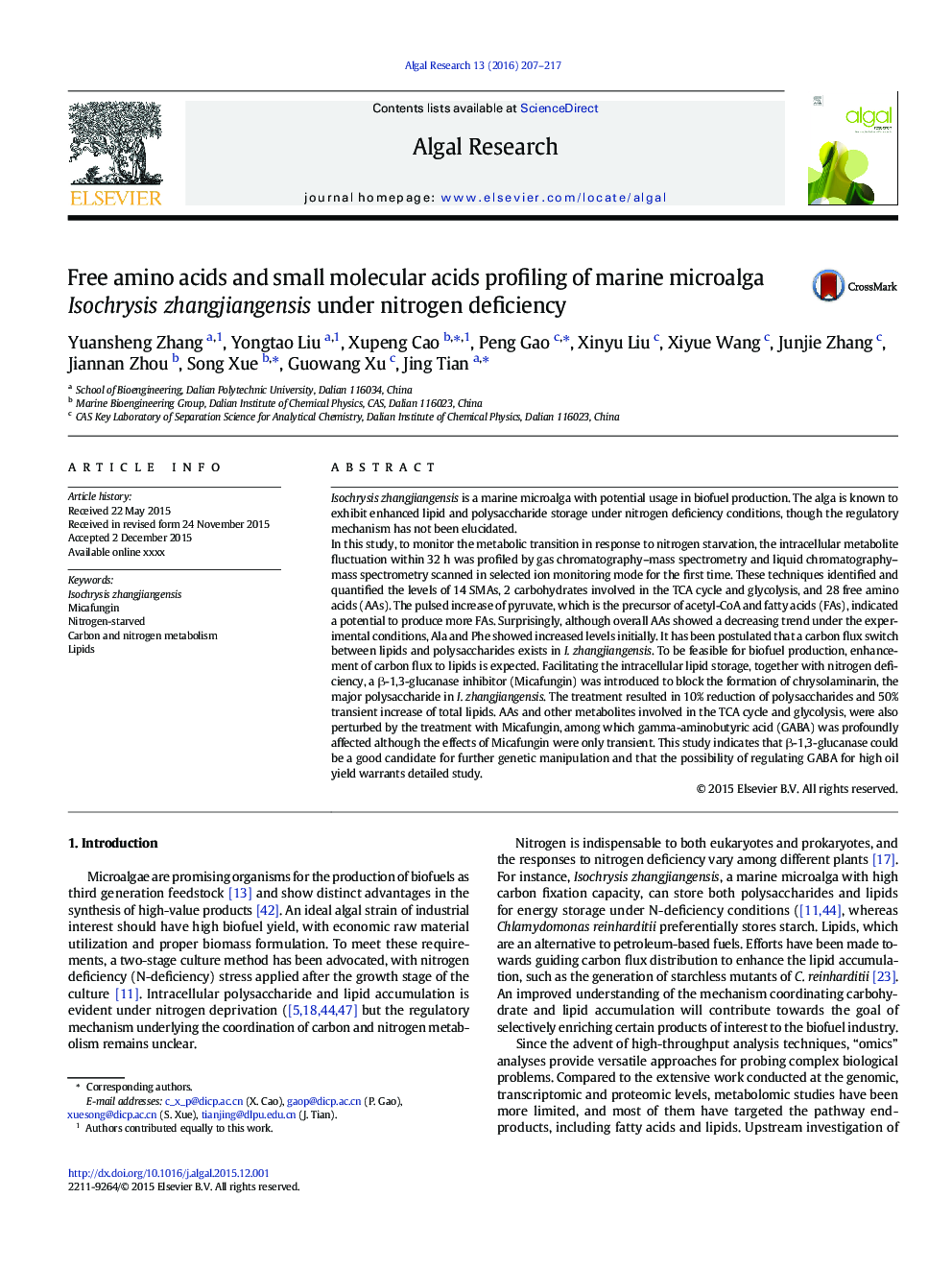| Article ID | Journal | Published Year | Pages | File Type |
|---|---|---|---|---|
| 8087510 | Algal Research | 2016 | 11 Pages |
Abstract
In this study, to monitor the metabolic transition in response to nitrogen starvation, the intracellular metabolite fluctuation within 32 h was profiled by gas chromatography-mass spectrometry and liquid chromatography-mass spectrometry scanned in selected ion monitoring mode for the first time. These techniques identified and quantified the levels of 14 SMAs, 2 carbohydrates involved in the TCA cycle and glycolysis, and 28 free amino acids (AAs). The pulsed increase of pyruvate, which is the precursor of acetyl-CoA and fatty acids (FAs), indicated a potential to produce more FAs. Surprisingly, although overall AAs showed a decreasing trend under the experimental conditions, Ala and Phe showed increased levels initially. It has been postulated that a carbon flux switch between lipids and polysaccharides exists in I. zhangjiangensis. To be feasible for biofuel production, enhancement of carbon flux to lipids is expected. Facilitating the intracellular lipid storage, together with nitrogen deficiency, a β-1,3-glucanase inhibitor (Micafungin) was introduced to block the formation of chrysolaminarin, the major polysaccharide in I. zhangjiangensis. The treatment resulted in 10% reduction of polysaccharides and 50% transient increase of total lipids. AAs and other metabolites involved in the TCA cycle and glycolysis, were also perturbed by the treatment with Micafungin, among which gamma-aminobutyric acid (GABA) was profoundly affected although the effects of Micafungin were only transient. This study indicates that β-1,3-glucanase could be a good candidate for further genetic manipulation and that the possibility of regulating GABA for high oil yield warrants detailed study.
Related Topics
Physical Sciences and Engineering
Energy
Renewable Energy, Sustainability and the Environment
Authors
Yuansheng Zhang, Yongtao Liu, Xupeng Cao, Peng Gao, Xinyu Liu, Xiyue Wang, Junjie Zhang, Jiannan Zhou, Song Xue, Guowang Xu, Jing Tian,
